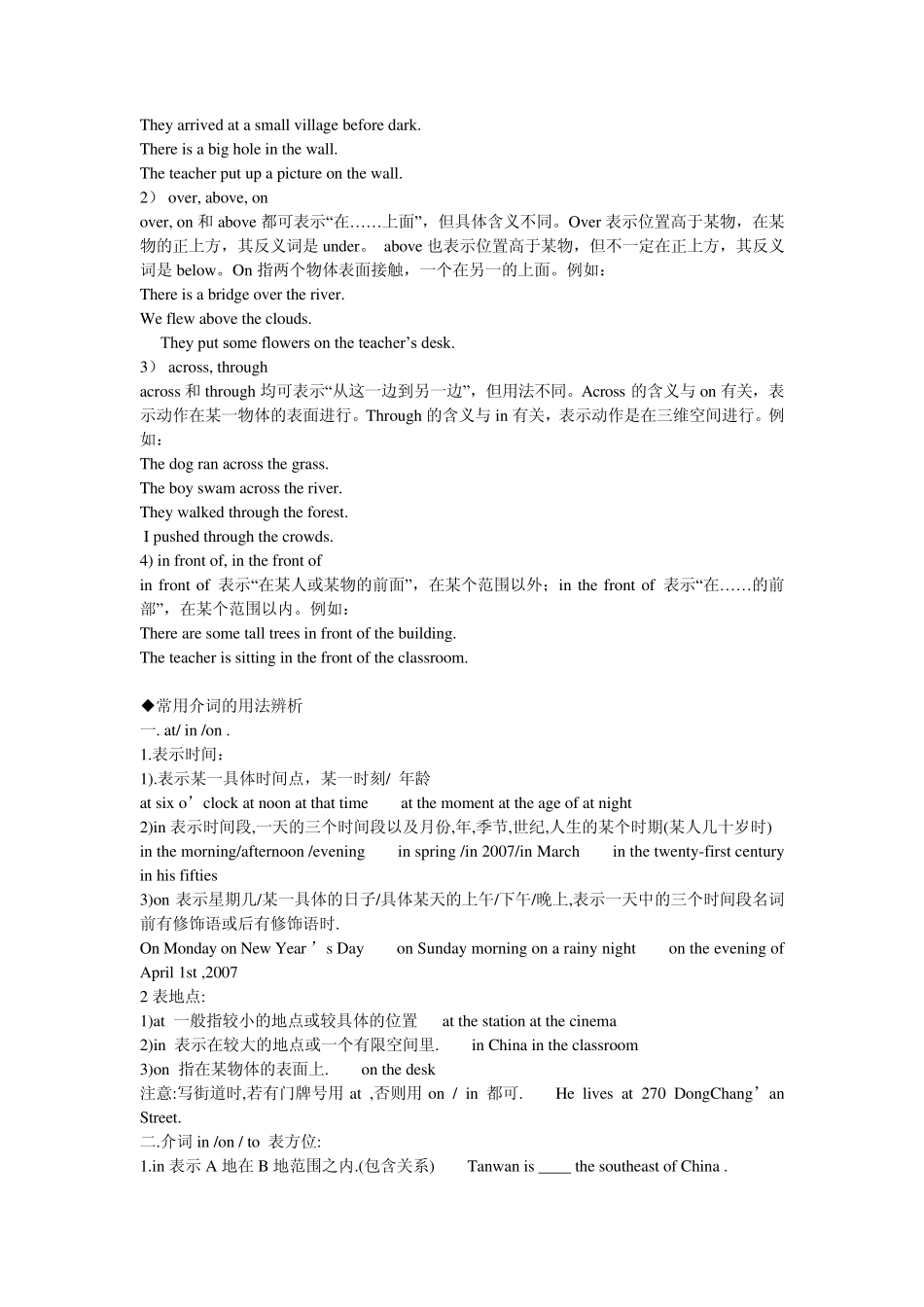中考语法复习——介词及介词短语 【考点直击】 1.常用介词及其词组的主要用法及意义 2.介词表示时间、方位、方式别的基本用法 3.一些易混介词的辨析 【语法讲解】 ◆ 介词的功能 介词是一种虚词,用来表示名词或相当于名词的其它词语句中其它词的关系,不能单独使用。介词可与名词或相当于名词的其它词构成介词短语。介词短语可在句中作定语,状语,表语和宾语补足语。例如: The boy over there is John’s brother. (定语) The girl will be back in two hours. (状语) Our English teacher is from Australia. (表语) Help yourself to some fish. (宾语补足语) ◆ 介词和种类 (1) 简单介词,常用的有 at, in, on, about, across, before, beside, for , to, without 等。 (2) 复合介词,如 by means of, along with, because of, in front of, instead of 等。 ◆不同介词的用法 (1 )表时间的介词 1)at, in on 表示时间点用 at。例如:at six o’clock, at noon, at midnight。表示在某个世纪,某年,某月,某个季节以及早晨,上午,下午,晚上时,用 in。例如:in the nineteenth century, in 2002, in may, in winter, in the morning, in the afternoon 等。表示具体的某一天和某一天的上午,下午,晚上时,用 on。例如:on Monday, on July 1st, on Sunday morning 等。 2) since, after 由 since 和 after 引导的词组都可表示从过去某一点开始的时段,但 since 词组表示的时段一直延续到说话的时刻,因而往往要与现在完成时连用。而 after 词组所表示的时段纯系过去,因而要与一般过去时连用。例如: I haven’t heard from him since last summer. After five days the boy came back. 3) in, after in 与将来时态连用时,表示“过多长时间以后”的意思,后面跟表示一段时间的词语。After与将来时态连用时,后面只能跟表示时间点的词语。After 与过去时态连用时,后面才能跟表示一段时间的词语。例如: He will be back in two months. He will arrive after four o’clock. He returned after a month. (2 )表示地点的介词 1)at, in, on at 一般指小地方;in 一般指大地方或某个范围之内;on 往往表示“在某个物体的表面”。例如: He arrived...


